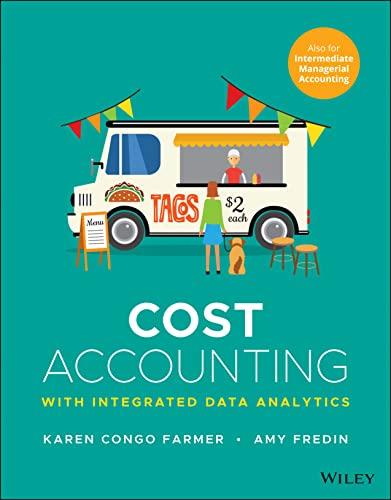
The Bangor Manufacturing Company makes mechanical toy robots that are typically produced in batches of 260 units. Prior to the current year, the company's accountants used a standard cost system with a simplified method of assigning manufacturing support (i.e., overhead) costs to products: All such costs were allocated to outputs based on the standard machine hours allowed for output produced. You have recently joined the accounting team and are developing a proposal that the company adopt an ABC system for both product-costing and control purposes. To illustrate the benefit of such a system in terms of the latter, you decide to put together an analysis of batch-related overhead costs. You chose these costs because a previous investigation indicated that there is both a variable component to these costs (materials plus power) plus a fixed component (depreciation and salaries). Last year's budget indicated that the variable overhead cost per setup hour was $10.00 and that the fixed overhead production setup costs per year were $20,000. Output was budgeted at 10,400 units for the year. Typically, a batch takes 4 hours of setup time. For cost-control purposes, assume that the flexible budget is based on the budgeted number of setup hours for the output of the period. You have also collected data regarding actual results for the past year. Specifically, the company produced (and sold) 9,360 toy robots, which were produced in an average batch size of 195 units. The actual setup hours per batch last year turned out to be 4.25 hours, and the actual variable overhead cost per setup hour was $9.50. Actual fixed setup-related overhead costs were $21,200 last year. Your discussion with the company controller indicates that under the previous accounting system all setup-related overhead costs were allocated to production based on machine hours. The standard machine hours allowed per unit produced was 1.50 hours. The denominator activity level assumed for applying fixed manufacturing support costs to units produced was 15,000 machine hours. Required: 1. Under the ABC approach, what was (a) the spending variance and (b) the production volume variance last year for the fixed setup- related overhead costs described above? Indicate whether each variance is favorable (F) or unfavorable (U). 2. Under the ABC approach, what was (a) the spending variance and (b) the efficiency variance last year for the variable setup-related overhead costs described above? Indicate whether each variance is favorable (F) or unfavorable (U). (Round your final answers to 2 decimal places.) 1a. The spending variance 1b. The production volume variance 2a. The spending variance 2b. The efficiency variance Unfavorable Unfavorable Favorable Unfavorable







